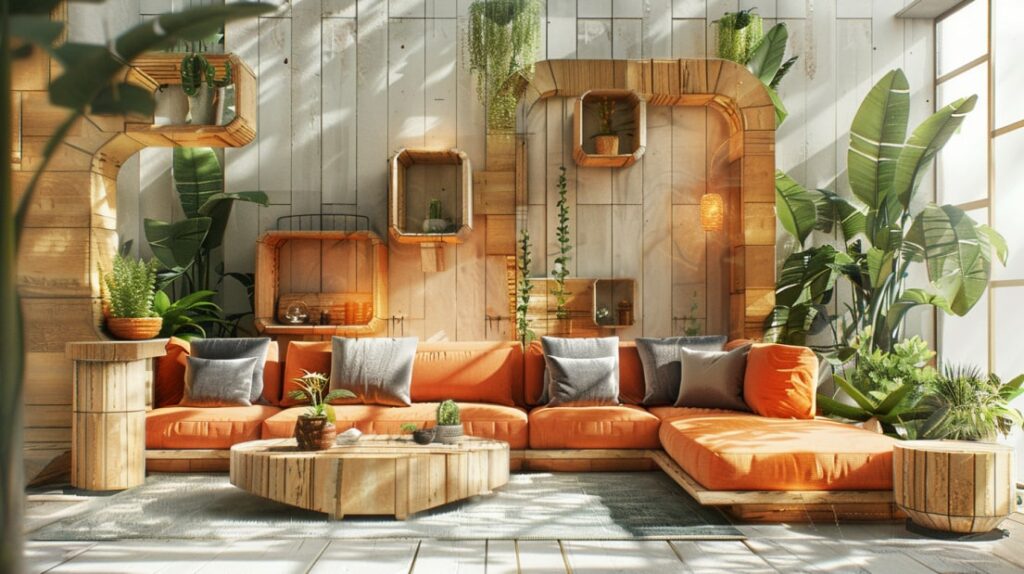
Source: https://unsplash.com/photos/a-green-house-with-a-red-roof-and-windows-zpQ0i1tBnyM
Let’s be honest—owning a home feels like an impossible dream for many Australians right now. Prices keep climbing, and the cost of living isn’t doing us any favors either. But here’s something you might not have considered: going green doesn’t have to mean spending more. In fact, sustainable living can actually make home ownership more achievable and affordable in the long run.
If you’re tired of throwing money at rent or watching your utility bills creep higher every quarter, it’s time to explore how eco-friendly choices can help you own a home without breaking the bank.
Understanding the True Cost of Sustainable Home Ownership
When most people hear “sustainable home,” they picture expensive solar panels, fancy rainwater tanks, and a price tag that makes their wallet cry. But sustainable home ownership is really about making smart choices that save you money over time.
Think of it this way: a traditional home might be cheaper upfront, but you’ll be paying hefty electricity bills, water bills, and maintenance costs for decades. A sustainable home flips this equation. Yes, you might invest a bit more initially, but those monthly savings add up fast.
The Australian government actually wants to help you go green. There are rebates, grants, and incentives specifically designed to make sustainable features more affordable. First home buyers can often access special schemes that reward energy-efficient choices. When you factor in these incentives alongside your reduced running costs, sustainable home ownership starts looking pretty smart financially.
Harnessing Renewable Energy to Slash Utility Bills

Source: https://unsplash.com/photos/white-and-black-house-under-white-clouds-during-daytime-M7l_DEnL05g
Why Energy Independence Matters for Budget Conscious Homeowners
Let’s talk about electricity bills for a second. Have you noticed how they just keep going up? It’s frustrating when you’re trying to save money, but power companies keep raising their rates. This is where renewable energy becomes your best friend.
When you generate your own power, you’re not at the mercy of price hikes. Your monthly costs become predictable—even non-existent in some cases. Many homeowners who’ve made the switch report saving anywhere from $1,500 to $3,000 annually on electricity. Over twenty years, that’s serious money you could put toward your mortgage or actually enjoy spending.
Choosing the Right Energy Solution for Your Location
Not every property is the same, and that’s okay. Your energy needs depend on where you live, how much roof space you have, and what your daily consumption looks like.
If you’re in Melbourne’s outer suburbs, you’re actually in a sweet spot. Areas like these often have larger roof spaces perfect for installations, and the infrastructure is growing to support renewable energy systems. For instance, getting Solar Panels in Cranbourne has become increasingly popular as more homeowners in regional areas realize the benefits of energy independence paired with available space.
The beauty of modern renewable systems is the flexibility in how you pay for them. You can purchase outright if you’ve got the savings, or explore payment plans that spread the cost over several years. Some companies even offer lease options where you pay monthly—often less than what you’d save on electricity, meaning it pays for itself from day one.
Maintenance is minimal too. Most systems come with 25-year warranties and only need occasional cleaning and a professional check every few years. Plus, if you generate more power than you use, many energy retailers will buy that excess back through feed-in tariffs, putting even more money in your pocket.
Exploring Compact and Efficient Living Spaces

Source: https://unsplash.com/photos/black-and-white-living-room-set-mlNgLocaVo8
The Movement Toward Smaller Footprints
Here’s a question worth asking: do we really need as much space as we think? The Australian dream used to be all about the biggest house you could afford. But times are changing, and people are waking up to something important—bigger isn’t always better.
Smaller homes cost less to buy, less to heat and cool, less to maintain, and even less in council rates. That’s money staying in your bank account instead of disappearing into home ownership costs. And honestly, when you’re not spending your weekends cleaning rooms you barely use or stressing about filling empty spaces with furniture, life gets simpler and more enjoyable.
This isn’t about sacrifice. It’s about being intentional with your space and your money.
Modern Alternatives to Traditional Housing
The housing market has evolved, and there are now options that our parents never had. Compact dwellings have come a long way from what you might imagine. We’re talking about beautifully designed spaces with full kitchens, proper bathrooms, comfortable bedrooms, and clever storage solutions that make every square meter count.
The market for tiny homes for sale has expanded significantly, offering customizable designs that don’t compromise on comfort or style. These aren’t cramped or uncomfortable—they’re thoughtfully designed homes that just happen to be more efficient with space. Many come with high-quality finishes, sustainable materials, and modern amenities that rival traditional houses.
Beyond these, there are granny flats, modular homes, and other space-efficient options worth exploring. Just make sure you check your local council’s zoning regulations before you commit. Some areas are more welcoming to alternative housing than others, but the rules are loosening as more Australians embrace this way of living.
The environmental benefits are huge too. Smaller homes require fewer building materials, less energy to run, and have a lighter footprint on the planet. It’s a win-win situation.
Smart Design Choices That Maximize Efficiency
Passive Design Principles That Cost Nothing
Want to know the best sustainable feature? One that’s completely free? It’s called passive design, and it’s all about working with nature instead of against it.
Position your home to capture winter sun and avoid harsh summer heat. Place windows strategically for cross-ventilation so breezes flow through naturally. Use materials that absorb heat during the day and release it at night. These aren’t expensive add-ons—they’re design choices that cost nothing extra but save you money forever.
Affordable Upgrades With High Impact
If you’re working with an existing home or budget constraints, start small. LED bulbs throughout your house might cost $100 but will save you hundreds annually. Water-saving showerheads and tap fixtures pay for themselves within months.
Proper insulation is unglamorous but incredibly effective. Stopping heat transfer through your ceiling and walls can cut your heating and cooling costs by up to 45%. Weatherstripping around doors and windows costs under $50 and makes an immediate difference.
When appliances need replacing, choose energy-efficient models. That Energy Star rating isn’t just a sticker—it’s a promise of lower running costs. A smart thermostat can learn your schedule and stop wasting energy when nobody’s home.
Financing Your Sustainable Home Dream
Good news: lenders are catching on to the value of sustainable homes. Green home loans often come with lower interest rates because banks recognize that lower utility bills mean you’re less likely to default on your mortgage.
First home buyer grants sometimes offer extra incentives for energy-efficient properties. State and federal governments run various rebate programs for sustainable features—it’s worth spending an hour researching what’s available in your area.
When calculating affordability, don’t just look at the purchase price. Factor in those energy savings, lower maintenance costs, and potential rental income if you’re considering a property with a granny flat. Your total cost of ownership might be significantly lower than a traditional home, even if the initial price is similar.
Some sellers even offer rent-to-own arrangements or vendor financing for sustainable properties. It’s worth asking what’s possible.
Taking the First Steps Toward Sustainable Ownership
Feeling overwhelmed? Don’t be. You don’t need to do everything at once.
Start by listing sustainable features in order of priority for your situation. Maybe renewable energy is your biggest win. Maybe it’s finding a smaller, more affordable property. There’s no single right answer—it depends on your circumstances.
Research local contractors who specialize in green building. Join online communities focused on sustainable living in Australia. You’ll find people who’ve been exactly where you are now, and they’re usually happy to share what worked and what didn’t.
Remember, sustainable home ownership is a journey, not a destination. Every eco-friendly choice you make contributes to both your financial health and the planet’s wellbeing.
Conclusion
Owning a home while living sustainably isn’t reserved for the wealthy or the ultra-committed. It’s a practical, achievable path that can actually make home ownership more affordable for everyday Australians.
The combination of lower ongoing costs, government incentives, and smart design choices means you can own your own place without sacrificing your financial security or your values. Whether it’s through renewable energy, compact living, or simply making smarter choices about efficiency, the path to sustainable home ownership is more accessible than you think.
The best time to start? Right now. Even small changes add up to big impacts over time.
FAQs
Q: Is sustainable home ownership really more affordable than traditional housing?
A: While some upfront costs may be higher, sustainable homes dramatically reduce ongoing expenses. Lower utility bills, reduced maintenance, and government rebates often mean you’ll spend less overall. Many homeowners break even within 5-10 years and then enjoy decades of savings.
Q: How much can renewable energy systems save on monthly bills?
A: It depends on your system size and energy usage, but most homeowners see their electricity bills drop by 50-90%. Some achieve complete energy independence, paying nothing for electricity. With feed-in tariffs, you might even earn money from excess generation.
Q: What government incentives are available for sustainable housing?
A: Australia offers various programs including solar rebates, first home buyer grants for energy-efficient properties, and state-specific schemes. These change regularly, so check your state government website and the federal Clean Energy Regulator for current offerings.
Q: Can I retrofit my existing home to be more sustainable?
A: Absolutely! Most sustainable features can be added gradually to existing homes. Start with simple upgrades like LED lighting and insulation, then move to bigger investments like renewable energy systems when your budget allows. Every improvement helps.
